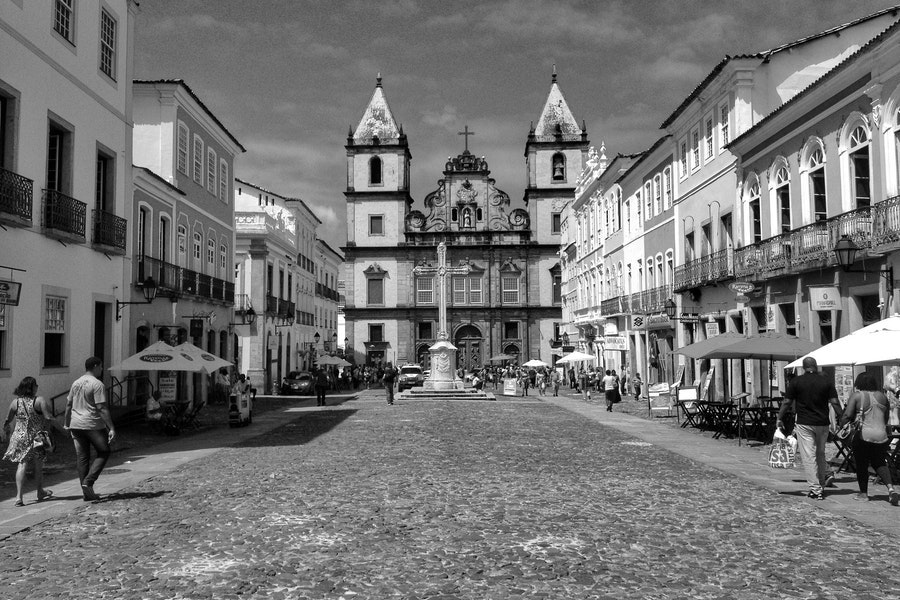Originally published February 2021.
That I have worked and lived on three continents has given me the chance to create amazing relationships with many different people and cultures, and more importantly, to develop the ability to put things into perspective and context. In my many interesting conversations with investors around the world, one question that often comes up is: “What are you doing in Latin America?” My knee-jerk response is usually: “I’m taking an MBA in life or learning how the world really works.” I have come to realise that geography is not a limiting factor but rather something that allows me to step outside and observe from beyond the rest of the pack.
To that point, I felt it was worth taking some time to reflect on my time in Latin America through my own lens. For context (because context is important) my lens is predominately helping Latam-based capital groups, both private and institutional, to make smart real estate investments in markets outside Latin America. I hope you can benefit from some of the things I have learned along the way.
The institutional market is highly regulated and restrictive
There are many headlines around the ‘opening of the floodgates’ when it comes to the Latin American institutional investor universe. It is true there are large pools of capital that are under-allocated to alternatives and more specifically real estate, but these same groups are highly regulated in both how they invest and what they invest in. There is still a lot of work required by the regulators to open those floodgates and allow portfolio managers to invest additional capital in foreign real estate markets.
Latin Americans love real estate
The spirit of investing in bricks and mortar for capital/inflation protection is alive and strong in Latin America. One conversation I had the other day described real estate as the bank, which I think is a great example of the culture here. It is true that in many countries around the world that have political/economic/currency instability, real estate is the first place to preserve value. What this means is that investment decisions based on fundamental economic drivers of value are sometimes flipped on their head in local markets. All investors, no matter where they are located, have different reasons for investing.
There is more capital than there are good opportunities in the region
Many of the Latin American economies have large informal labour environments when compared with global peers. This is improving slowly, but what this means is that commercial real estate is largely underrepresented in proportion to the region’s population. Domestic capital pools have an important role to play in the development of local real estate markets and there are positive changes being made by regulators to facilitate expansion in the capital markets, but fundamental demand drivers are a constraint to rapid growth in the industry. For that reason, we will continue to see outbound capital investment from Latin America.
You cannot generalise an entire investor population, but in my experience the more sophisticated groups in the region are looking for outperformance with diversification
Latin American investors have a very different style from Asian and Middle Eastern capital groups
Asian and Middle Eastern investors tend to be highly focused on capital preservation. Latin American investors want capital protection, but also growth. You cannot generalise an entire investor population, but in my experience the more sophisticated groups in the region are looking for outperformance with diversification. That is true from both a private capital and an institutional capital perspective.
They are US-centric and likely to benefit from being more holistic in the way they invest
Most Latam groups that I speak with tend to focus largely on the United States. This region is very much dollar-denominated and dollar-dependent and, as a result, that is the first place investors look when making the decision to go outside of the region. Fortunately, the US is the largest and most liquid real estate market globally. Time difference and travel requirements are always very important when making investment decisions in real estate. It is also common to invest in countries where investors have both a shared language and family connections. In my opinion, the UK is underrepresented, as are countries in Asia. They may even get more favourable tax treatment, which is an issue when investing in the US for foreign investors.
Latin Americans largely do not invest cross-border
It is largely home country or outside Latin America, with some exceptions. The Andean region has some similarities in ease of doing business and cross-border agreements, which means you do see cross-border activity, although it tends to be concentrated in the hands of very few players. Real estate markets in the region lack scale, so it often doesn’t make sense to take the risk of moving into neighbouring markets. For this reason, ex-Latin American investment is the main destination for cross-border investment.
We will increasingly see the aggregator model (common in Asia/Middle East) grow in Latin America
Based on everything I have discussed above and what I am experiencing in the local markets, I think we will continue to see the development of the aggregator model in Latin America. Due to local regulatory requirements, it is often difficult or not tax-efficient for Latin American investors to invest outside the region. The same model that is very popular in places like South Korea or the Middle East in channelling large amounts of private capital into foreign investment markets is likely to evolve in this region.








